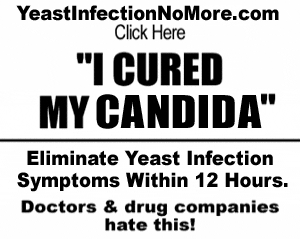If you suffer from candida dysbiosis, or yeast overgrowth, you’re in good company. The condition afflicts some 80 million Americans every year. The good news is, the condition is fairly easy to treat. The bad news is, the treatment’s side effects can be unpleasant, too.
You see, the only way to remedy the conditions brought on by candida is to kill off the candida bacteria, reducing their numbers back to where they’re supposed to be naturally. (Your body is meant to have SOME candida, remember.) But when yeast is killed off rapidly and in great numbers, whether by the body’s immune system, by drugs, or by a radical change in diet, the dying candida cells excrete toxins.
This condition is known as the Herxheimer Die-off Reaction, and the symptoms aren’t pretty. Common side effects of candida die-off are headache, fatigue, aches, mucous congestion, constipation, gas, dizziness, depression -- in other words, some of the same symptoms of the ailment (candida dysbiosis) that you’re trying to get rid of in the first place!
Because of this, many patients unfortunately abandon their yeast-reduction program before it’s finished, thinking either that it’s not working or that the cure is worse than the disease. This is a mistake, however. The candida die-off side effects can last from a few days to a few weeks, but they usually clear up within seven days. Once they’re gone, the candida symptoms are gone, too, and you’re back to normal.
There are several ways to combat candida overgrowth, some healthier than others. The die-off symptoms do NOT happen every time. They are only the result of yeast being killed too quickly and in great numbers. If you take a slower, more methodical approach, you can often avoid the die-off side effects altogether.
The first step is to modify your diet to starve the candida. This means avoiding sugars and simple carbohydrates that break down rapidly, and foods that are fermented or contain yeast or mold.
Then, with many candida cells already starved to death and the others weakened, you move in for the kill. Your doctor can prescribe something specifically to get rid of the candida, and some home remedies work, too. Grapefruit seed extract, calcium undecylenate, and sorbic acid are among the more common anti-yeast remedies.
If you find you are suffering from candida die-off reactions, there are things you can do to minimize the effects. Sometimes, reducing your dosage of antifungal remedies for a few days can do the trick. Those medicines kill off the yeast quickly, so slowing down the death rate can make the transition smoother.
Get plenty of rest, too, as excessive fatigue or exercise during the die-off phase will make the symptoms worse.
It’s also important to drink lots and lots of water -- so much water you think you’re drinking too much -- as this helps flush out the toxins being released by the dying candida. Along those same lines, be sure to have complete and thorough bowel eliminations, using laxatives if necessary.
Above all, don’t be discouraged. The process of killing off the excess candida in your system can be rough, but in the end you’ll be glad you did as you return to your full health.
For more information about simple, effective natural strategies to
.
Naturally get rid of Candida ...Click here!

